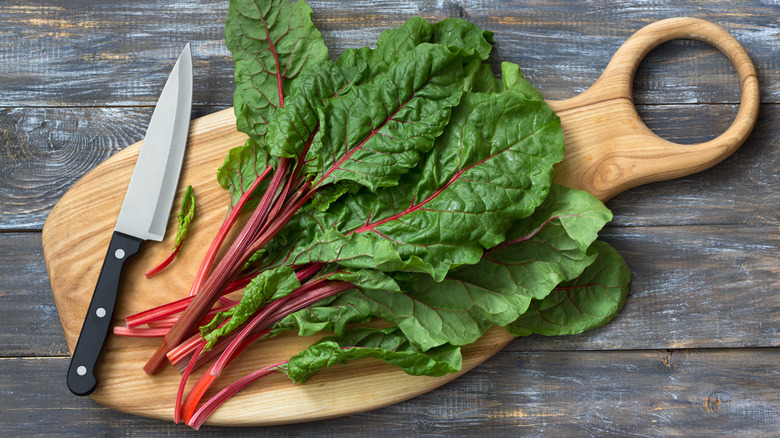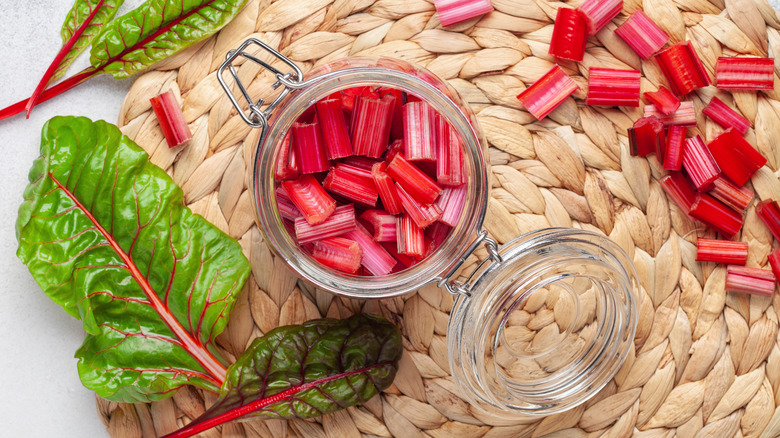The Best Way To Use Up Leftover Chard Stems
Swiss chard is a type of green grown for its leafy stalks. The stems are available in assorted colors including white, orange, pink, yellow, and red. The red look similar to beet greens, and the white coloration is called silverbeet. It's actually a variety of beet that develops without producing an enlarged taproot, sending energy to the leaves and ribs instead. It comes from the drolly-named goosefoot family of plants, like beets and spinach, with foliage suggestive of a goose's foot.
Per Colorado State, chard's origins hail from Sicily and it was later cultivated across Europe, the Mediterranean, and the United States. Until the late 1800s, it was exclusively used in salads, a method that allows for retaining its vibrant color. Known for being mildly flavored with a taste reminiscent of spinach or kale, the stalks are crisp with a hint of sweetness and the leaves are slightly bitter. According to the University of Madison-Wisconsin, the bitterness is more prominent in leaves that reached maturity in hot, dry weather and it becomes mellower with cooling temperatures.
Farmer's markets are an ideal venue for chard, as it fares better when sold locally owing to the perishable nature of the greens. With urgency in mind, recipes sometimes call for the leaves only resulting in perfect leftover stems. It's also possible you could discover a bunch of slimy leaves on still-fresh ribs in your refrigerator drawer. We offer a tasty way to use those hardier parts.
Swiss chard stems make a zesty condiment
According to Healthline, Swiss chard leaves and stems are rich in nutrition, fiber, and antioxidants and low in calories. Therefore, the stems are equally as valuable and shouldn't simply be discarded – cooking with the whole vegetable is healthful and delicious. Further, it's a sound economic and environmental investment, too, although it might necessitate a bit more forethought. "I think people probably don't pay attention to vegetable scraps because they require some thinking and planning," author Carol Blymire told us in an exclusive interview, but she's attracted to the time-worn and comforting process. Swiss chard stems are a favorite "cast-off" of hers, and she pickles them in a mixture of white and coconut vinegar with mustard and celery seeds. Prepared this way, Blymire claims the stems will last for up to three months.
Ex-pat and cookbook author David Lebovitz, who found himself with a rare bunch of ruby chard in his Parisian kitchen was unwilling to toss the stems after making a dish that used only the leaves. He also turned to pickling them; perhaps because pickles go so well with cheese. His recipe features fennel seed, garlic, and Thai chile. Add them to sandwiches, charcuterie and cheese boards, and salads. Or snack on them straight from the jar while taking in the pretty pink brine.

